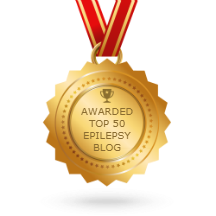 When your child is on the medical ketogenic diet for seizures, the word “ketone” is a part of your everyday vocabulary. Not only do you talk about them, chances are that you measure them regularly as well. Despite this, you may find yourself wondering, “What are ketones anyways?”
When your child is on the medical ketogenic diet for seizures, the word “ketone” is a part of your everyday vocabulary. Not only do you talk about them, chances are that you measure them regularly as well. Despite this, you may find yourself wondering, “What are ketones anyways?”
Ketones, sometimes referred to as “ketone bodies”, are water-soluble compounds (meaning that they dissolve in water) that are produced as “byproducts” when the body burns fat for energy [1]. Normally, the body produces only small quantities of ketones but ketone production increases when the body is using fat as a primary source of fuel. This happens during starvation, when the liver burns stored body fat for energy, and on a ketogenic diet, when the liver burns large quantities of dietary fat for energy.
As the liver burns fat, ketones build up in the blood and the body is said to be in “ketosis”. Ketones are transported from the liver through the blood to the brain, heart, and skeletal muscles where they can be used for energy[2].
Types of Ketones:
There are 3 different types of ketones: beta-hydroxybutyrate, acetoacetate, and acetone. Beta-hydroxybutyrate and acetoacetate are the most abundant ketones[3]. Acetone is produced in much smaller quantities, making up just a small proportion of the total ketone levels. While beta-hydroxybutyrate and acetoacetate are transported through the blood to provide energy to other parts of the body, acetone is not. Instead, it is exhaled through the lungs, which is why individuals on the medical ketogenic diet may have a characteristic smell to their breath.
Measuring Ketones:
When the body is in ketosis, ketones can be detected in the blood, urine and even in the breath.
Health care providers typically measure a patient’s ketone levels using blood or urine tests. Blood tests measure the blood levels of beta-hydroxybutyrate specifically. Urine tests, on the other hand, measure the levels of acetoacetate primarily. Although blood tests are generally viewed as more reliable measures of ketosis, urine testing is more practical for caregivers. Health care providers may use blood tests to evaluate ketone levels during diet initiation and at follow-up appointments but most families will measure ketones at home using urine test strips. Ketones can also be measured in the breath, although this is not a commonly used method [4, 5]. Breath testing of ketones specifically measures the level of acetone exhaled.
The Role of Ketones in Seizure Control
Because ketones can pass through the blood-brain-barrier, they are able to enter the brain to provide fuel[1]. There are many theories about how the ketogenic diet works to reduce seizures. One theory is that the ketones have an antiepileptic effect on the brain. However, we still don’t know exactly what role ketones play. Although ketone levels are good indicators that the body is in ketosis, the level of ketones do not always correlate with the degree of seizure control[6]. In other words, some individuals may have high levels of ketones but poor seizure control while others have low ketones but good seizure control. Because of this, some researchers believe that ketone levels may just be a sign that the body is in ketosis and that perhaps there is some other factor associated with ketosis that is responsible for the effect on seizures.
- Kossoff, E.H., et al., Ketogenic Diets: Treatments for Epilepsies and Other Disorders. Fifth ed. 2011, New York, NY: Demos Medical Publishing.
- Nelson, D.L. and M.M. Cox, Lehninger Principles of Biochemistry. Third ed. 2000, United States of America: Worth Publishers.
- Qiao, Y., et al., Breath ketone testing: a new biomarker for diagnosis and therapeutic monitoring of diabetic ketosis. Biomed Res Int, 2014. 2014: p. 869186.
- Musa-Veloso, K., S.S. Likhodii, and S.C. Cunnane, Breath acetone is a reliable indicator of ketosis in adults consuming ketogenic meals. Am J Clin Nutr, 2002. 76(1): p. 65-70.
- Musa-Veloso, K., et al., Breath acetone predicts plasma ketone bodies in children with epilepsy on a ketogenic diet. Nutrition, 2006. 22(1): p. 1-8.
- Danial, N.N., et al., How does the ketogenic diet work? Four potential mechanisms. J Child Neurol, 2013. 28(8): p. 1027-33.
 ness. It was a sea of purple in the office and our internal social media site was flooded with photos of employees across the US and Canada sporting purple. We were so impressed by everyone’s enthusiasm that we decided to double the funds raised.
ness. It was a sea of purple in the office and our internal social media site was flooded with photos of employees across the US and Canada sporting purple. We were so impressed by everyone’s enthusiasm that we decided to double the funds raised.


 Follow
Follow
